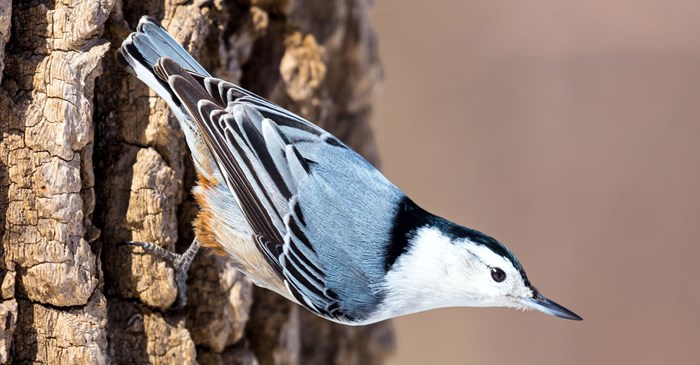You might say the White-breasted Nuthatch is one with the trees. They can "stand" in just about any position or angle, as their feet cling effortlessly to the bark. This ability to maneuver sideways and upside-down comes in pretty handy, actually, because it makes the insects they so love to eat so easy to reach.
They have also been known to stash food under bark and in crevices of trees, including seeds carted away from your backyard feeder. That’s just part of their winter-prep routine, as the White-breasted Nuthatch lives year round in much of the continental U.S. They prefer forested areas, especially those with deciduous trees, and they can also be found in backyards, especially if your neighborhood is thick with mature trees. In the winter, they may join up with foraging flocks of Black-capped Chickadees, Tufted Titmice and woodpeckers.
Males and females stick together even after they’ve raised their annual brood of 5 to 9 babies. They’ll build their nests in tree cavities, but they might choose a nesting box if you set one out. Once they are finished building, they will take a crushed insect in their beaks and "sweep" the nest with it, inside and out. Some scientists believe they do this to keep away squirrels. When leaving the nest, they will take a piece of fur or vegetation and “sweep” with it to throw predators and competitors for the nesting space off their scent.
Though the White-breasted Nuthatch spends a lot of time searching for insects, they are frequent feeder visitors and they especially enjoy sunflower seeds and peanuts. Try filling your feeder with Lyric Woodpecker No Waste Wild Bird Mix. It has the high-quality shelled nuts and dried fruit that your backyard visitors will find appealing — even the White-breasted Nuthatch.
